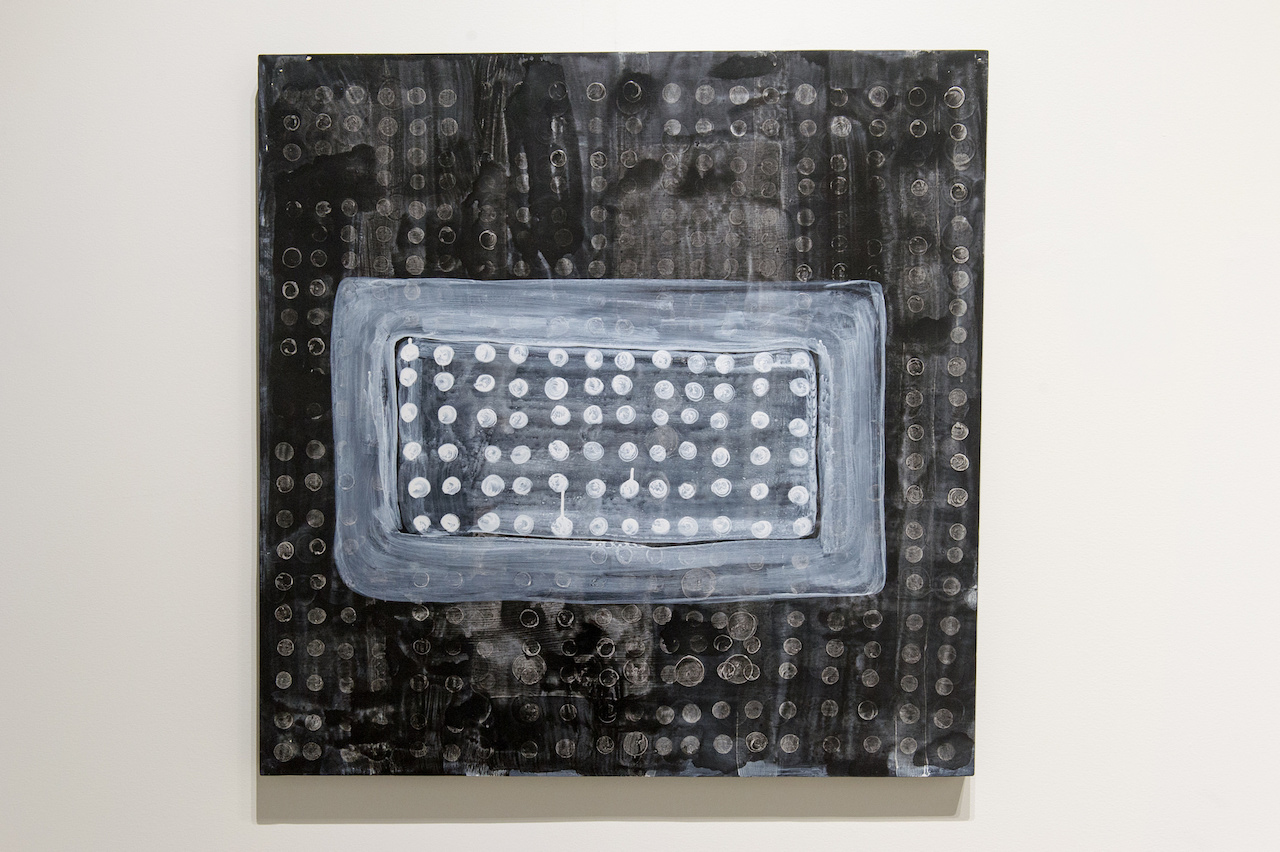
Torkwase Dyson, painting from ‘Strange Fruit (Series),’ on view in ‘Unkeeping’ at Eyebeam (photo by Christine Butler)

Torkwase Dyson, painting from ‘Strange Fruit (Series)’ (click to enlarge) (photo by the author for Hyperallergic)
“Sometimes people wonder why an art organization focused on technology is supporting an abstract painter, and the short version of it is that we’re trying to redefine technologies,” David Borgonjon of Eyebeam told Hyperallergic. “When we say technology, we don’t just mean the gadgets, apparatus, and Uber-imitations of Silicon Valley, but skills that people have developed to navigate the world. Eyebeam believes that the most inventive technologies in any society aren’t created by the privileged few, but by people who have skin in the game and are discriminated against. That’s why Eyebeam gave Torkwase a studio for two years and $60,000.”
As Dyson, an Eyebeam Research Resident, puts it on her site, her work questions “under what conditions can un-keeping a place or thing become a means of developing a deeper understanding of our own genealogy.” In a discussion on April 9, Dyson will discuss the ideas behind Unkeeping in a “Black Spatial Matters” panel with writer and scholar Tony Bogues and architect Mario Gooden.

Installation view of ‘Torkwase Dyson: Unkeeping’ at Eyebeam (photo by the author for Hyperallergic)

Torkwase Dyson, paintings from ‘Strange Fruit (Series)’ (photo by the author for Hyperallergic)
Dyson researched many of these sites through her mobile South Studio Zero, a nomadic solar-powered work space from which to consider these spatial issues. It recently arrived in Charlottesville, Virginia, for her upcoming show at Second Street Gallery, as shown below:
That tangible sense of place also grounded Dyson’s 2015 “Site on Sight: 2 (The Door of No Return),” recently on view at Socrates Sculpture Park, where she reinterpreted the “door of no return” on the Elmina Slave Castle in Ghana, the last departure for people boarding slave ships. Climbing up the incline of the piece, you looked out on the skyline of New York City, a place with an economy shaped in its early days by this human trafficking.
Yet this history often remains invisible. It was only last June that a marker was dedicated to the Wall Street Slave Market that operated in 18th-century Manhattan. Like the paintings and drawings, this abstracted experience brings something human to a history where humanity was lost.

Installation view of ‘Torkwase Dyson: Unkeeping’ (photo by the author for Hyperallergic)

Torkwase Dyson, drawings from ‘Auction Block (Series)’ (photo by Christine Butler)

Installation view of ‘Torkwase Dyson: Unkeeping’ (photo by the author for Hyperallergic)

Torkwase Dyson, sculptures from ‘Auction Block (Series)’ (photo by Christine Butler)

Δεν υπάρχουν σχόλια:
Δημοσίευση σχολίου